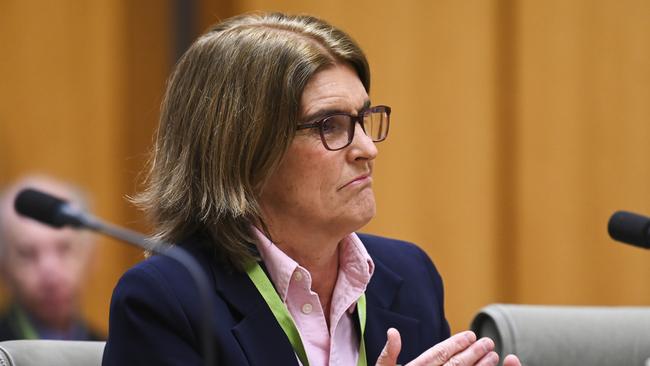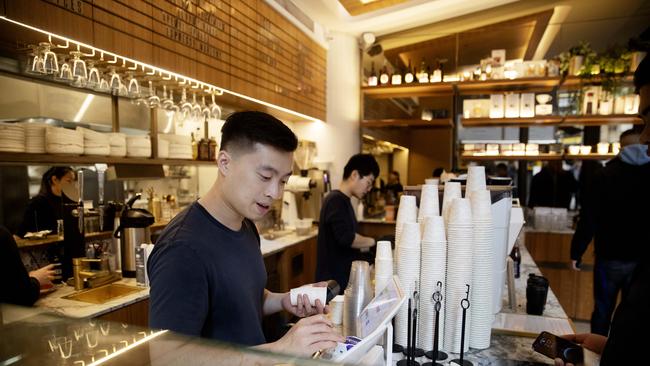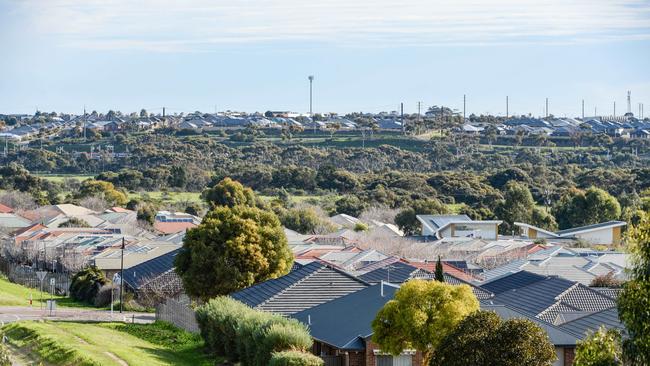RBA governor Michele Bullock warns on increasing ‘homegrown’ inflation
Inflation is increasingly being driven by domestic factors, not those from overseas, RBA governor Michele Bullock says.

Australia’s inflation problem is increasingly “homegrown” as imported cost pressures continue to wane, Reserve Bank governor Michele Bullock has warned.
In an address to the Australian Business Economists network in Sydney on Wednesday night, the RBA governor said local inflation was the dominant driver of the nation’s cost of living crisis, pushing back against the perception that inflation was purely driven by supply-side constraints.

The declaration comes as the RBA mulls the need for further rate rises to slow the economy and bring inflation – currently running at 5.4 per cent – back to its 2 to 3 per cent target band.
“If we look across the CPI basket, around two-thirds of items have inflation running above 3 per cent – indeed, often a long way above that number,” she said.
Noting that prices for labour-intensive services including trips to the dentist, hairdresser or restaurant had continued to rise briskly, Ms Bullock said the nation’s demand for goods and services was continuing to outstrip their supply.
“The cost of these services is also typically driven by the price of domestic inputs,” Ms Bullock said.
She said the RBA expected this next phase of the inflation fight to take longer because of the domestic pressures as international factors ease.
“An important implication of this homegrown and demand-driven component to inflation is that getting inflation back to target will take time,” Ms Bullock said.
“This shift from mainly supply-driven to mainly demand-driven inflation has been a part of our inflation outlook for some time.”
She said because of this the “blunt instrument” of rate rises was the right response.

Ms Bullock acknowledged many Australians were doing it tough, but that struggle “emphasises the need to get inflation back down.”
“ … the bank’s statutory objectives are economy-wide outcomes, and our key tool – the interest rate – is a blunt one,” she said.
“The board must therefore set its policy to serve the welfare of Australians collectively.”
Ms Bullock’s remarks on the domestic impact on inflation appears at odds with claims made by some members of the Albanese government, who have continually referenced global price pressures on the Australian economy.
“The world is inflicting price pressures on Australians and we are doing our best to ease them,” Treasurer Jim Chalmers said just a few weeks ago.

Pointing to the nation’s wages bill, Ms Bullock also contrasted this with anaemic productivity growth, which could trigger further inflationary pressures should productivity not improve.
“Labour costs have risen, especially when we incorporate the effect of weak productivity growth.”
Fresh data released last week showed annual wages growth vaulted to a 14-year high of 4 per cent in September, as award wage earners and aged care workers received one-off pay rises due to decisions by the Fair Work Commission.
At the same time, productivity growth has slumped to its lowest levels since May 2016, according to recent GDP figures.
For businesses, energy bills, rents and insurance had also “increased noticeably”, she added.
Governor Bullock also sought to counter the narrative that price pressures were broad based, rather than reflective of outsized increases for a few items.
“Inflation is much broader than just rising prices for petrol, electricity and rents,” she said, adding that “prices are rising strongly for the majority of the goods and services we all consume.

Minutes for the RBA’s Melbourne Cup Day meeting released on Tuesday, where the bank’s eight member board hiked the cash rate a 13th time since May 2022 to 4.35 per cent, cited the ongoing strength of the local economy as a reason for the increase.
“High inflation was being underpinned by above-average price rises for a wide range of consumer goods and services,” the minutes read.
“There was clear evidence – most notably for services price inflation, which was quite brisk – that this owed to domestically generated pressures associated with aggregate demand exceeding aggregate supply.”
Despite Ms Bullock’s concerns that inflation will remain sticky, money markets ascribe just one in 20 odds that the central bank will increase rates when it next meets on December 5, however, this increases to a near 40 per cent chance by March next year.






To join the conversation, please log in. Don't have an account? Register
Join the conversation, you are commenting as Logout